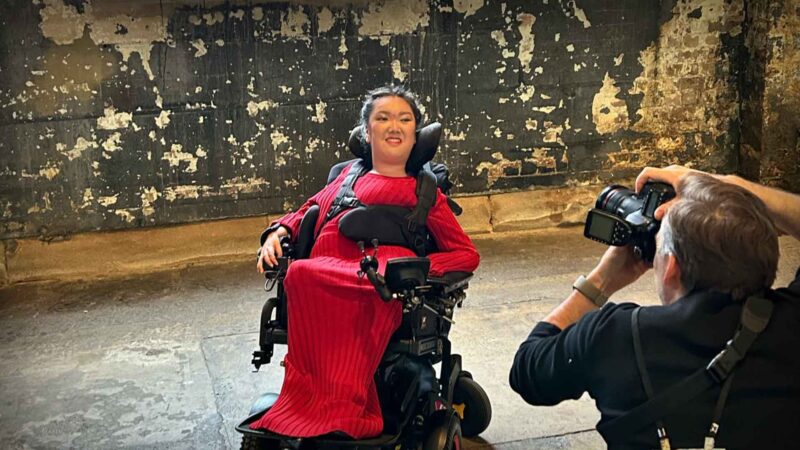INVESTMENTS TO ADDRESS HEALTH INEQUITIES IN PROSTATE CANCER CARE Movember funds three Australian programs targeting under-served populations
SEGMENT
Filmed in Melbourne | February 2025
INTERVIEWS
Sarah Weller
Global Director – Prostate Cancer, Movember
Kris Bennett,
Director – Prostate Cancer Health Equity, Movember
Movember is committed to advancing new research, cutting-edge treatments, and healthy behaviours, and advocating for inclusive, gender-responsive healthcare that caters to the unique needs of men, women, and gender-diverse individuals from diverse cultural backgrounds. In doing so, they hope to forge a future where barriers to healthy living are overcome, stigmas are removed, and where everyone has an equal opportunity to live a long, healthy life.
Income, education, geographical location, and discrimination based on ethnicity, race, gender and sexual orientation, are only a fraction of factors that can negatively affect a person’s quality of cancer care. This is defined as the “equity gap” and it’s costing people their lives.
Timed to coincide with World Cancer Day 4th February 2025, Movember announced prostate cancer investment of $5.5 million. Eighteen grants (16 proposals and 2 community development grants) are slated to directly tackle inequities in prostate cancer care. The funding will be over three years with the grants spread across five countries – six in Canada, five in the United Kingdom, three in Australia, three in the United States and one in Ireland – each having a specific focus population and care area.
AUSTRALIAN FUNDING FOR TARGETED PROSTATE CANCER CARE OUTREACH PROGRAMS
– The prostate cancer mortality rate in remote areas is almost 20% higher than in major cities. Access to treatment is the leading cause. This equity gap is what the Royal Flying Doctor Service of Australia’s grant will address, to improve access to and use of prostate cancer treatment services in rural and remote areas.
– Currently, prostate cancer data on the culturally and linguistically diverse communities of South Western Sydney is insufficient. That’s the first roadblock to improving this historically overlooked group’s prostate cancer care. The George Institute for Global Health aims to fill in the blanks with population level data to help close this equity gap.
– Australian Prostate Centre will create culturally appropriate prostate cancer services and practices for the LGBTQIA+ community, to counter the fear of discrimination and stigma that often stands in its way of getting prostate cancer screenings and diagnoses.
Australian Health Journal spoke with Movember about these targeted outreach programs in Australia and the hope they will help provide education and empower historically and intentionally excluded communities, using community stakeholders and voices to build trust. Collaborations with healthcare providers, academic institutions, and community-based organisations will share resources and expertise to develop tailored solutions.
You Might also like
-
Accessibility Co-design and adoption Consumer involvement New Content Patient Experience People in healthcare
Lived experience & human-centred design in healthcare
Recognised as one of the Top 100 Women of Influence by The Australian Financial Review, Melanie Tran is a visionary leader whose work lies at the intersection of design, technology, health, disability, and education. With a focus on human-centred design, digital strategy, and service design, she leads transformative initiatives as a Manager in Design, Digital and Data at Nous Group, a global consulting firm. Her work is driven by a deep passion for using creativity and technology to solve complex social challenges.
-
Emerging researcher appointed to James Packer Chair in Mood Disorders at UNSW
The UNSW Discipline of Psychiatry and Mental Health is widely renowned as the pre-eminent psychiatry research department in the country and one of the leading university psychiatry research groups internationally. In 2023 it celebrated 60 Years of Psychiatry & Mental Health at UNSW Sydney.
Australian Health Journal spoke with Professor Kimberlie Dean, Head of the Discipline of Psychiatry and Mental Health at UNSW Sydney, about the recent appointment of mental health disorders expert and clinician researcher Dr Aswin Ratheesh to lead the James Packer Chair in Mood Disorders at UNSW Sydney. -
CASE STUDY: Evolution in the medical device supply chain
For Cardinal Health, a global manufacturer and distributor of medical products, the process begins when products arrive in Australia and are cleared by customs before being stored at their Sydney warehouse. From here, they fulfil orders for various clients, including hospitals and wholesalers, supported by DHL’s logistics services.



